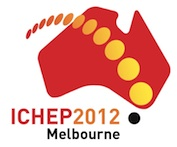Speakers
Dr
Jean-Philippe Lansberg
(Institut de Physique Nucléaire d'Orsay / IN2P3-CNRS (FR))
Jean-Philippe Lansberg
(IPN Orsay, Paris Sud U. / IN2P3-CNRS)
Jean-Philippe Lansberg
(Ecole polytechnique)
Jean-Philippe Lansberg
(Ecole Polytechnique)
Description
We will discuss the nuclear-matter effects on J/Psi and Upsilon production at RHIC and the LHC in proton-nucleus and, by extension, in nucleus-nucleus collisions. In the Upsilon case, we will argue that (i) the Upsilon break-up probability can be neglected in a first approximation, (ii) the gluon shadowing and antishadowing are not strong enough to describe forward RHIC data, (iii) the backward data hints at a gluon EMC effect, possibly stronger than the quark one, (iv) fractional energy loss provides a very convincing explanation for the Upsilon suppression seen by PHENIX in the forward region. Following these discussions, predictions for the LHC pPb run will be presented. In the J/Psi case, we will show that the fractional energy loss needed to explain the forward Upsilon suppression provides an alternative explanation to a strong gluon saturation for the strong forward J/Psi suppression at RHIC. We will discuss how this also affects J/Psi production in pA collisions at LHC energies. We will present results for J/Psi production in dAu at RHIC as function of rapidity, centrality and transverse momentum as well as for pA and AA collisions at the LHC. We will also pay special attention to two potential experimental issues in the interpretation of the LHC data, namely the absence of pp measurements at the same energy as for pPb and the difference in the transverse-momentum region accessed by the different detectors, i.e. ALICE vs. CMS and ATLAS.
Authors
Dr
Andry Rakotozafindrabe
(SPhN, CEA, Saclay, France)
Dr
Elena Ferreiro
(Universidad Santiago de Compostela, Spain)
Dr
Frederic Fleuret
(Ecole Polytechnique, France)
Dr
Jean-Philippe Lansberg
(Institut de Physique Nucléaire d'Orsay / IN2P3-CNRS (FR))
